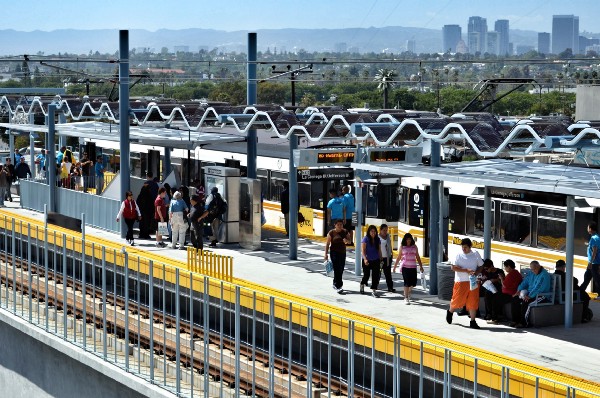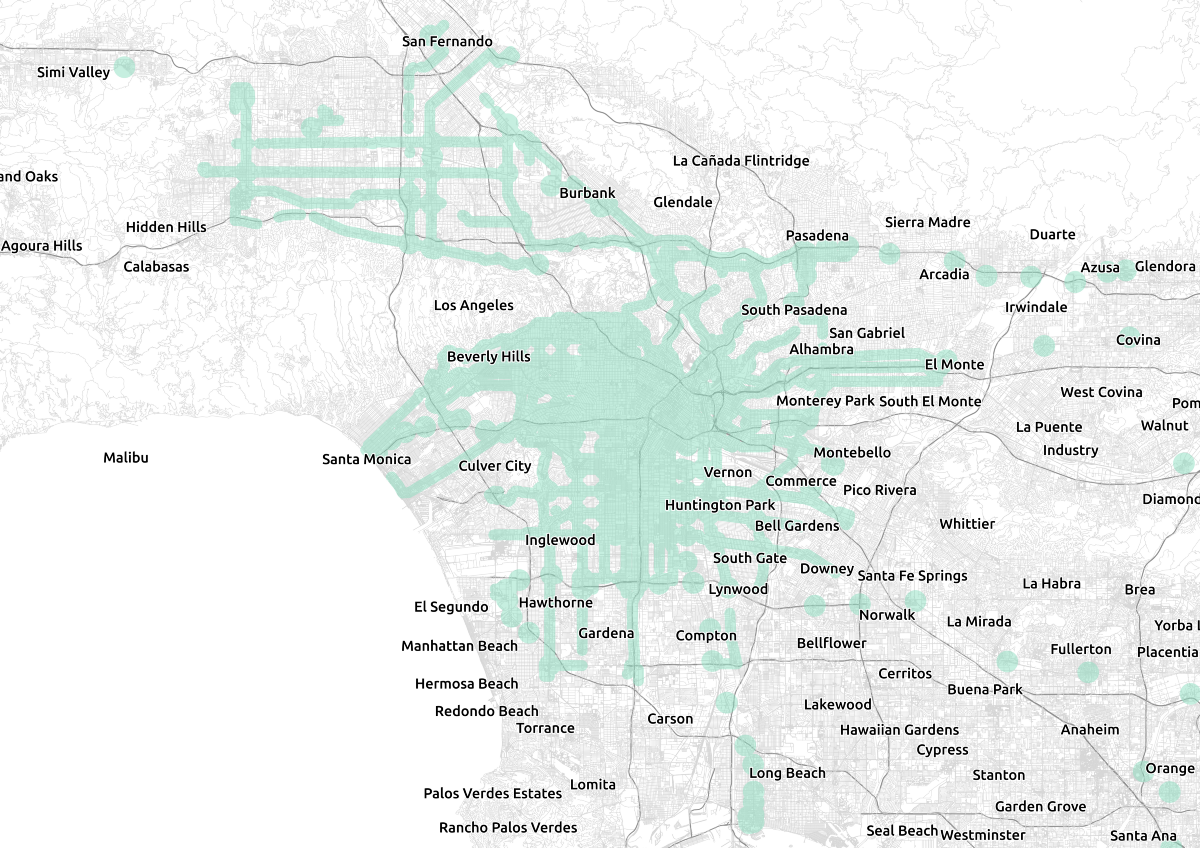Will Rezoning Around Transit Stops in California Undermine Support for Public Transit?
A proposal under consideration in the California State Senate would prevent cities from limiting residential density near public transit. SB 827, proposed by state Senator Scott Wiener, prevents cities from enforcing zoning ordinances with housing density maximums, sets minimum standards for height limits, and abolishes parking minimums, in the areas around “high connectivity” transit stations and along corridors with transit service more frequent than every 15 minutes. This would allow the construction of much more sorely-needed housing in California. However, it could also increase opposition to future public transit projects.

Areas near transit in California could soon be open to denser housing development. Photo by [Steve and Julie on Flickr](https://www.flickr.com/photos/estebanandjulie/6977603164/in/photolist-bCA3jQ-cWsW25-cWsVQd-dP78EG-cWsUzh-cWsXkj-8LtbUg-cWsVBb-cWsWKd-cDdpyo-8Lt7s4-cWsXao-WGZWuG-8gySrA-WbhRHJ-ejy136-WbhZfs-8h2Z1t-Vxfp1z-Wz5RxR-UHKsZC-8uiXKc-WGZWwq-VuoLrU-WyWFx6-cWsWu5-cWsXUj-8gTQyZ-bRrKmc-WGZWxN-cWsUSb-cWsV2m-cWsVn1-dqE5Ru-Vxfp5T-cWsV9J-c7XZky-cWsUHL-9JymXn-cWsUeu-GZbdUh-dqE6eN-cWsWf1-9Rui53-cWsUrs-cWsWVq-c7XDg7-cvxUFu-bTUFiM-cw5FAq), CC BY 2.0.
I don’t yet have an opinion on the bill. I’m a dedicated YIMBY (Yes In My Backyard, a movement promoting housing development in places where housing production does not keep up with demand). I am deeply troubled by rising housing costs throughout the nation, which are largely due to restrictive zoning. I strongly favor allowing construction of higher density housing, with less parking. From this standpoint, the bill is a great leap forward. It makes it much easier to build high density housing near transit. Increasing the supply of housing will help housing prices fall, and locating it near transit will allow residents to get around in an environmentally-friendly and cost-effective way.
However, I’m also a strong proponent of expanding public transit in our nation’s urban areas, and I’m concerned this bill will make that harder in California. Residents often protest vocally when higher density housing is proposed in their neighborhood. Parking is often a concern: residents are concerned that finding on-street parking in their neighborhoods will be more difficult with the influx of new residents. School crowding is another concern. Preserving neighborhood character (architectural or social) is another.
These are potent concerns, and they’re already used to block housing construction in California, even when proposed construction is allowable under existing zoning. SB 827 invites these same concerns to transit projects, such as new rail or bus rapid transit lines. Transit projects could be blocked over concerns that they would bring high-density housing to the neighborhoods they serve.
This is not necessarily a bad outcome, though. Transit thrives on density, so building more dense housing near it will make it more efficient and cost-effective. Maybe zoning for increased density should go hand in hand with transit construction. SB 827 would couple these two conversations, making any transit investment an investment in, and a conversation about, both transportation and land use. Less transit might get built, but the transit that does get built could be smarter and more effective.
In most places in the world, transit construction and land use change go hand in hand. In many place increases in land value due to increased proximity to transit are “captured” and used to fund the development of public transport in the first place (full disclosure: the first author of the linked paper, Deborah Salon, is my PhD adviser). For instance, in Hong Kong, newly-valuable land near new public transit lines is leased or sold, generating profits for the transit authority and funding infrastructure construction.
To some extent, public transport and increased housing density are already linked in California. The Regional Housing Needs Allocation (RHNA) process identifies the projected housing need in each metropolitan area in the state, and the Metropolitan Planning Organization (MPO) for that area, in coordination with the local jurisdictions, must then plan and zone to allow enough housing units to meet that need. Part of this planning is developing a Sustainable Communities Strategy, which involves projecting the greenhouse gas emissions that would likely result from transportation given the housing plan, and keeping them within certain limits. This effectively means planning for denser housing near transit, where residents will use more environmentally-friendly modes of transport. SB 827 goes further to permit additional housing production near transit.

Areas in Los Angeles potentially affected by SB 827. Data © LA Metro, Metrolink, OpenStreetMap contributors.
SB 827 doesn’t just affect areas near subway stations. The bill specifies that its provisions apply to any location within 1/4 mile of a bus corridor with peak service at headways of 15 minutes or less, and 1/2 mile of a major transit stop (rail stops, and places where high frequency bus corridors intersect). The map above shows where these locations are in Los Angeles,¹ given current Los Angeles Metro and Metrolink service. The bill applies to the downtown area but also to many of the inner suburbs.
In Los Angeles, this is largely driven by a relatively high frequency bus system; much of the city is served at headways of 15 minutes or better, meeting the bill’s definition of high-quality transit and permitting denser development nearby. However, this also means that service planners might face opposition even to incremental improvements in bus service (e.g., increasing the frequency of a line from every 20 minutes to every 15).
SB 827 creates an interesting and important debate. It would permit the development of sorely needed housing in California. It would also create a public conversation about land use change when transit is constructed, potentially allowing transit to be more effective. But it would likely also cause opposition public transit projects. It’s not clear whether the benefits in housing construction would outweigh the added opposition to transit projects; that’s for the residents and the lawmakers of California to decide.
This map contains a number of assumptions, and certainly should not be used for planning. The biggest assumption has to do with the definition of “corridor”: I considered a street to be a high-frequency corridor if there was a bus every 15 minutes traversing it in the same direction, whether or not those buses were on the same route. For instance, consider two routes running every 20 minutes, but alternating to provide service every ten minutes. The shared segment would be considered a high-quality corridor. I intend to do a follow-up post in the coming weeks on the methodology used to create the map.